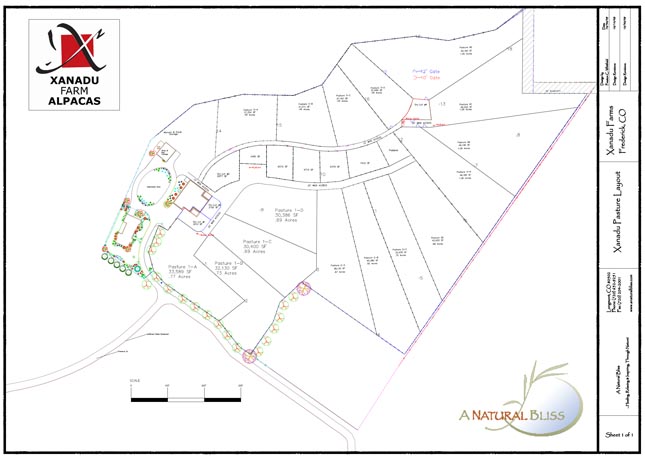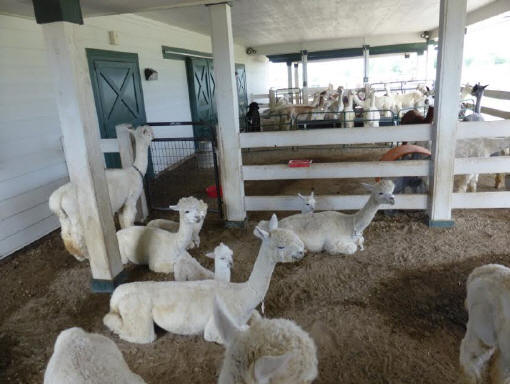|
|
303-902-1741 (C) 303-651-0785 (Fax)
Pastures and Paddocks
Xanadu Farm Approach to Pastures and Paddocks Part One
When we moved to our new farm on the Colorado
front range in 2011 we were lucky to start with undeveloped land
Pasture Management
We reseeded 16 acres of pastures with a special
native grass mix with warm and cool season grasses consisting
Getting to weed free pastures (mostly Canadian
thistle) has turned out to be a lot tougher than we thought because
One bonus of the pastures is that the alpacas
can’t keep up with the grass, and we’re able to hay every 6 weeks through the
summer.
Barns and Paddocks This is the layout of our barn, paddocks and pastures.
Our main barn is 30 x 60 and is heated in winter and cooled in summer, but except for really hot or cold days, the alpacas hang out in the attached “outside barn”. Its 4 large, covered paddocks are sheltered from prevailing winds, rain and snow. Each paddock opens into a set of 4 pastures ranging from ¾ of an acre to an acre that alpacas rotate through each week. The paddocks are open for water, shade and fans or to get out of the weather during the day, and alpaca are closed in the paddocks at night. Pastures are connected by aisles running the length of the property, with pastures to the outside. That way, we can just open the paddock gates in the morning, and the alpacas run out to pasture.
The herd sire paddocks, shelters and pastures run between the 2 aisles. Breeding males share a 6 X 12 shelter, waterer and fans, but each has his own paddock and ¼ acre pasture, and in summer we put up shade screens to give the boys more shade. The aisles between the males and females have “sorting” gates so we can set up breeding pens.
Females relaxing in the "Outside Barn"
303-902-1741 (C) 303-651-0785 (Fax)
|















